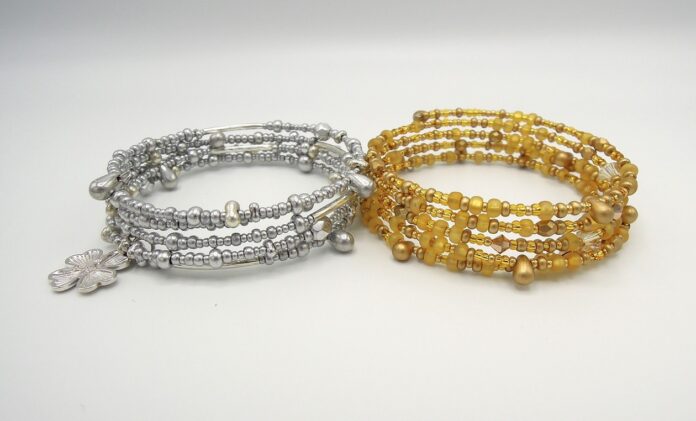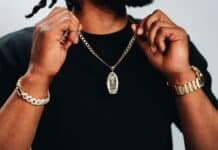Accessories are powerful tools for expressing style and personality. Among them, wrist ornaments remain a popular choice for both casual and formal looks. Whether aiming for elegance or adding a playful touch, the right piece can elevate any outfit without effort. These wearable accents are more than decorations; they carry emotional value and personal meaning. Some are treasured gifts, while others represent milestones or personal tastes.
Selecting a bracelet involves more than picking a visually appealing item. It requires a careful look at purpose, fit, materials, and how well it matches the occasion. The right choice can tie an entire outfit together or serve as a subtle complement to other accessories. From understated designs to bold fashion statements, this simple accessory holds countless style possibilities. This article will explore all the essential factors to help make a thoughtful and stylish selection.
Match the Purpose with the Style
Not every accessory fits every event. Casual outings, formal gatherings, and work-related settings each demand different design features. A thin metallic band suits corporate attire, while colorful woven pieces work better for laid-back weekends. Occasion-specific selections show attention to detail. For formal events, polished metals or delicate chains make a refined statement. Meanwhile, outdoor gatherings or festivals pair well with chunkier or beaded options that show off personality without compromising comfort.
Understand the Fit and Comfort
Even the most attractive bracelet will not impress if it fits poorly. Fit affects both comfort and style, making it an essential part of the decision-making process. Too tight, and it becomes uncomfortable. Too loose, and it may slip or appear untidy. Choosing the right size requires measuring the wrist and allowing just enough space for ease of movement. Adjustable closures or elastic bands offer flexibility for daily wear. When giving as a gift, it helps to opt for designs that can fit a range of sizes to avoid returns or replacements.
Consider the Material Used
Materials determine how long the accessory lasts and how it feels against the skin. Metal, leather, fabric, and wood each offer different aesthetic and tactile qualities. It’s important to think about the setting in which the piece will be worn and whether it will be exposed to moisture, sunlight, or rough use.
- Metal: Offers durability and a polished look but may cause reactions in sensitive skin.
- Leather: Stylish and timeless, though not ideal for humid climates.
- Beads or Threads: Great for casual settings but less appropriate for business wear.
- Wood or Stone: Earthy and unique but may require extra care.
For daily use, non-reactive metals or coated materials are safer for sensitive skin. For statement occasions, bold choices like semi-precious stones or layered textures provide visual interest.
Think About the Design Details
Every element—from color to shape—plays a part in how the final look comes together. Personal preferences, color matching, and the visual weight of the accessory influence how often it will be worn. A neutral tone may work across multiple outfits, while brighter shades may better suit festive occasions. Charm accents, engraving, and texture add uniqueness. Avoid overcomplicated designs if the goal is subtle elegance. When layering with a watch or other accessories, ensure the styles do not clash.
Look at the Clasp or Closure
A piece may look impressive, but a weak or impractical clasp can quickly become a problem. Closures should be secure yet easy to manage. Lobster clasps are common and reliable but may need assistance during fastening. Magnetic closures or toggles offer convenience, especially for individuals who value practicality. The type of clasp often goes unnoticed until it causes trouble. When choosing for children or seniors, opt for easier mechanisms. For high-end styles, precision in the clasp often signals quality craftsmanship and durability.
Evaluate Maintenance Requirements
Every accessory requires care, though some need more attention than others. Maintenance is especially important for those worn frequently. Metal finishes may tarnish, and fabrics can fade or fray over time. Knowing how to clean and store the item prolongs its appearance and usability. Low-maintenance pieces work better for individuals with busy routines. If the item includes delicate stones or complex designs, it’s best reserved for special occasions.
Balance Statement and Subtlety
Wearing something bold can turn heads, but overdoing it may distract from the overall appearance. On the other hand, minimalistic choices might not stand out in the way they are intended. Striking the right balance between subtle and expressive ensures a versatile accessory suitable for different events.
Here are a few quick tips to help:
- Go bold with color or size, not both.
- Match tones with other accessories to create harmony.
- Use minimalist designs for layering with watches or bangles.
A well-chosen bracelet reflects care, style, and intention. Its success lies not just in appearance but in how well it fits the person and the occasion. Finding the perfect match depends on evaluating the situation, understanding preferences, and ensuring a comfortable fit. When those factors align, the final choice becomes more than just an accessory—it becomes a signature detail in personal expression.





